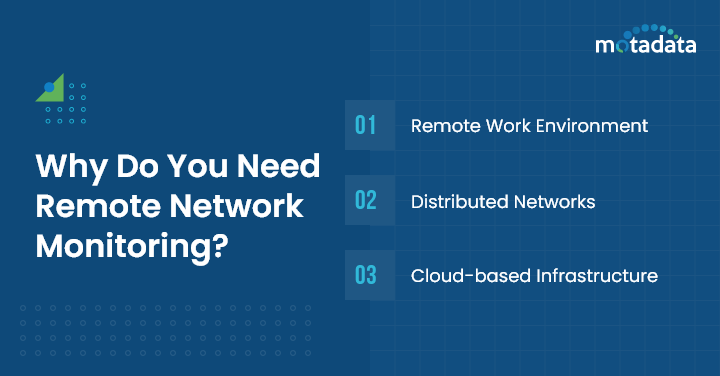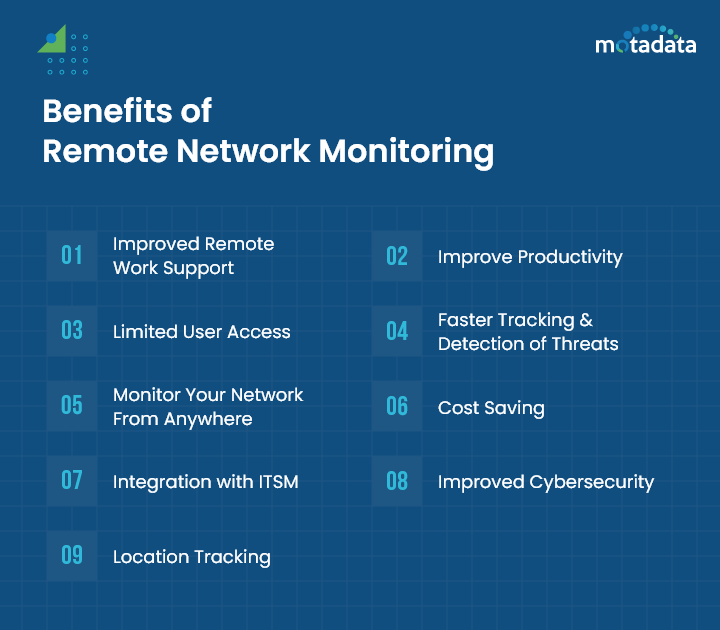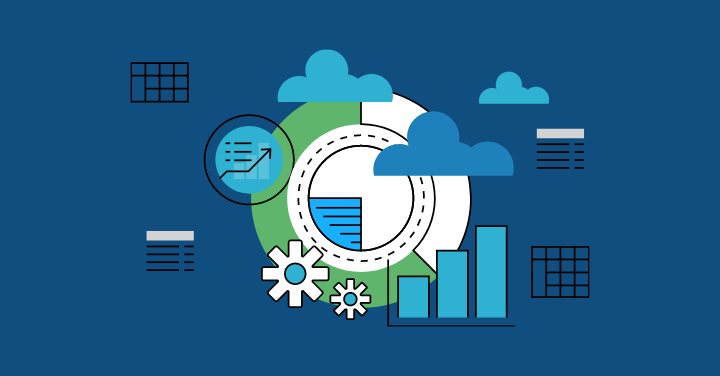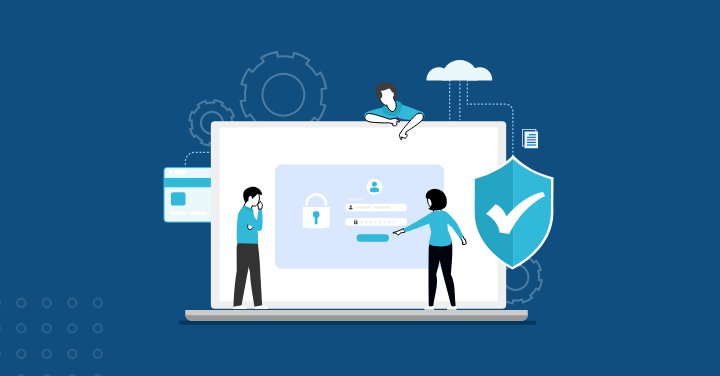Are you relying on outdated manual methods to monitor your network?
Struggling to keep up with the increasing complexity of your IT infrastructure?
Being constantly reactive to network problems instead of proactive in preventing them?
If you answered yes to any of these questions, then you’re putting your business at risk.
But don’t worry, there’s a way out — Remote Network Monitoring.
Yes, Remote Network Monitoring tools can alleviate all the above pain points by improving your productivity level and helping you stand out from the competition.
Today, remote network monitoring has become a necessity.
Why?
It’s because with remote working, employees are free to work from any location and in any manner they choose. It could involve using public WiFi or working on personal devices while working in public areas.
If you have weak security policies, you might fall into the trap of cybercriminals and face huge damages and losses. Hence, it is essential to keep track of your connected devices and applications on a network.
By real-time monitoring and management of networks, you can identify incoming threats and respond to them before they escalate. There are more benefits of remote network monitoring that we will discuss in detail.
But before we move forward, let us understand what remote network monitoring is, how it works, and why it is so important in the current era.
What is Remote Network Monitoring?
Remote network monitoring is a virtual technology that aids individuals and businesses to monitor and manage their connected devices on a network from a remote location.
It collects data from various sources and enables network administrators to analyze and troubleshoot issues before they cause any damage.
The collected information may include the number of packets sent and dropped, total bytes sent, communication between IP addresses, and more.
To facilitate this process, several specialized software and hardware tools are available in the market, offering comprehensive solutions to perform network data analysis.
Basically, with the help of remote network monitoring practices, businesses, managed service providers, and network administrators can track the overall health and performance of network devices from a centralized location.
In fact, they can even get a quick update on bandwidth usage and other performance metrics. Users can even set threshold alarms that will notify them when a user exceeds the set limit and take action.
For smooth networking, it proactively helps detect and troubleshoot issues in real-time.
How Does Remote Network Monitoring Work?
A remote network monitoring tool is deployed to each system by IT and network administrators to track the health and overall performance.
These Remote Network Monitoring tools have a central server that helps run SNMP and Ping tests to discover and detect systems.
The tool once added to the devices collects several data including device status, bandwidth usage, traffic, error, and other performance metrics. Remember, be it routers, switches, or other network components, data is collected from all sources.
The collected data is then forwarded for thorough analysis and gaining insights into the network. Most advanced remote network monitoring tools have a built-in Netflow collector but in case the tool doesn’t have one, you would need to configure the network components with the Netflow protocol.
Additionally, incorporating remote desktop multiple monitors can further streamline network monitoring by providing a broader view across multiple displays, enhancing visibility and control for network administrators.
NetFlow collector helps in forwarding data from one application to another for analysis.
With the help of monitoring tools, the data is interpreted and turned into insightful reports for a better understanding of network activities.
In case of any security threat or anomaly detection, an immediate alert is sent to the administration team to respond to the found issue.
Why Do You Need Remote Network Monitoring?
It is advantageous to use remote network monitoring in various scenarios, such as:
1. Remote Work Environment
Today, 65% of businesses prefer working remotely and collaborating over the network. For such cases, it is essential to invest in remote network monitoring as it will keep you updated about the performance and security of network infrastructure that supports remote employees.
Also, it will ensure seamless connectivity and deliver a better user experience.
2. Distributed Networks
Organizations with multiple branch offices in different locations might find remote network monitoring highly advantageous. With this solution, users will be able to gain clear and centralized visibility into the distributed network infrastructure.
It will further aid in troubleshooting issues, minimizing downtime, and resource optimization across all remote sites and locations.
3. Cloud-based Infrastructure
Many businesses are expanding their boundaries and adapting cloud services for improved productivity. Such organizations that rely on cloud-based resources need to start utilizing remote network monitoring.
It will enable them to keep track of cloud environments as well as on-premises networks resulting in seamless data transfer and optimal performance. Also, with quick insights, they can properly manage and resolve issues.
To complement the strengths of remote network monitoring, especially in securing networks for remote workers, using a remote IT support company can provide the necessary expertise and support.
What Are the Benefits of Remote Network Monitoring?
Here are the following benefits of remote network monitoring that can help your business in the long run and improve user experience.
1. Improved Remote Work Support
With a remote network monitoring solution, you can control devices across all of the locations where your network is spread out. Let’s say your business has branches in the local city as well as different parts of the state.
Now, with remote monitoring you can track each of your devices in remote locations as well as in the local city where they are operating. Moreover, if the system detects anomalies or suspicious behavior, it will hardly take any time to notify you.
It even allows configuring location-specific network maps and tracking device statuses for a given location. Thus, making it simple to identify between office and branch locations.
Even small businesses with a few branches can invest in remote networking monitoring tools and save administration time as well as improve productivity levels.
2. Improve Productivity
These tools are capable of scanning event logs on your servers for incidents that are relevant to you. On detecting any change or suspicious behavior, it will send a notification to the administrator team for review.
By anticipating and fixing network problems at an early stage, it will help reduce downtime. Thus, allowing staff members to work more productively and problem-free.
3. Limited User Access
The thought of remote access may make some network administrators uncomfortable due to possible security risks. But, in order to protect your network from unauthorized users, almost every remote network monitoring tool comes with an encrypted authentication feature.
Another feature that you can use to protect your network against security threats is customized user access. You have the option to limit your user access to specific resources. Enforcing access controls will surely enhance the overall security of your network.
4. Faster Tracking and Detection of Threats
Manually checking the status of each server can be challenging as well as time-consuming. Also, chances are high that you might miss the potential security threats with your naked eyes.
However, if you invest in a remote network monitoring tool, you can track all the breaches and threats in real-time.
Also, it will send immediate notifications and enable teams to respond promptly before the problem escalates.
5. Monitor Your Network From Anywhere
Remote monitoring practice allows IT network staff to access and monitor network activities from anywhere. Thus, providing flexibility to manage and monitor the critical devices as per the modern world work requirements.
It helps geographical barriers and offers peace of mind to employees who love to work and travel at the same time.
6. Cost Saving
Another great benefit of remote network monitoring practice is it saves on additional expenses and time.
Organizations will have to no longer pay for on-site visits and on-site troubleshooting as it will help detect issues in real-time and take action before the problem escalates. Also, early detection will help prevent your organization from costly network disruptions.
7. Integration with ITSM
Managed Service Providers will gain great benefits from the remote monitoring tool as it works well with the ITSM tool. The ability to prioritize and promptly resolve urgent problems is made possible by this integration.
In order to guarantee that administrators can take swift action in response to any outstanding issues, the ITSM integrations also make it easier for them to be escalated within the allotted time frame.
8. Improved Cybersecurity
One major advantage is improved cybersecurity since remote network monitoring lowers the chances of data breaches and cyberattacks by assisting organizations in identifying and responding to possible security incidents and vulnerabilities.
9. Location Tracking
IT teams can locate network devices geographically by using location tracking features that are supported by a few remote monitoring tools available in the market. They can even help in managing assets and security purposes.
Ready to Implement Remote Monitoring?
Several organizations are working remotely in the current era and collaborating with team members over a network.
If you want to maintain the overall performance and security of your network, remote network monitoring is crucial.
With a remote monitoring tool, you can manage and keep track of all your connected devices in a network, servers, and applications even from a remote location.
It will send updates about the network issues and device data in real-time no matter whether you are accessing the dashboard from a far location.
There are several tools in the market that you can choose from but we recommend the Motadata Remote Networking Tool for several reasons, such as safeguarding your critical assets, automating your mundane operations, saving on operating costs, and enhancing your product quality.
No matter whether your infrastructure is hybrid or multi-cloud, the Motadata solution will help capture your ever-increasing traffic and steaming data to find anomalies that impact your business objectives.
You can further track the application usage patterns and unusual critical events with the powerful tool.
With the practice of remote network monitoring, you can improve your productivity level and access devices locally as well as remotely. Additionally, the tool will alert in case of hardware failure, security threat, or loss of availability.
FAQs:
Remote network monitoring helps enhance network visibility by providing access to historical as well as real-time data and insights into the entire network infrastructure to the administrators, even when they are not physically present near the network location.
The tools deploy monitoring agents into devices that collect data for analysis.
The data collected from these tools helps find out the behavior of the traffic, security threats, anomalies, or any other issue that is of concern and requires attention.
The tool provides a clear view into the key performance metrics, traffic, bandwidth usage, network component availability, and resource usage.
With these insights, network administrators and IT professionals are able to minimize downtime and deliver better service to their users.
Yes, remote network monitoring can help address and fix issues before they occur or reach out to users’ attention with proactive insights and alert systems.
There are several benefits of remote network monitoring out of which the best one is it helps identify potential network issues at an early stage and save businesses from costly repair and downtime.
The tool constantly runs tests and keeps track of traffic patterns, device health status, and bandwidth usage.
On noticing any sign of network congestion, threat, or hardware failure, a message is instantly forwarded to the administrators to update the issue.
As a result, the administration teams are able to identify and address the issue in the initial stage and improve user experience.
Many businesses are working remotely and the network plays a great role in delivering quality results.
For secure and smooth remote networking, businesses rely on different monitoring tools.
In today’s time where cybercrime is on the rise, industries need to ensure compliance through remote network monitoring.
Ensuring compliance is vital for businesses and industries; it helps maintain privacy and prevent lawsuits.
Healthcare industries, financial institutions, telecommunication, government sector, energy sector, education, and e-commerce businesses must invest in monitoring tools that meet compliance standards.
For example, the healthcare industry must ensure that all the transmissions and storage options meet HIPAA standards that help protect patients’ privacy and confidentiality.
In order to maximize your remote network monitoring benefits, you must incorporate these practices, including:
- When your network is running smoothly, measure its performance and set a baseline based on its normal behavior and appropriate alert threshold values.
- Make sure to invest in tools that provide complete visibility into the entire network infrastructure.
- Network configurations should be standardized for different device categories.
- Make sure to customize and prioritize your alert system
- Enable the Auto-remediation feature for common issues that will save you time and resolve incidents quickly.
- Schedule regular maintenance tasks and ensure secure communication channels and protocols have been established between the device and the monitoring solution.









